Russian Cosmonaut Sergei Krikalev Is The World's Time-Travel Record Holder
Russian cosmonaut Sergei Krikalev has spent more time in orbit around the Earth than anyone - 803 days, 9 hours and 39 minutes.
And thanks to Universe Today , we now know another interesting fact about the retired Russian space adventurer…
He's also the world's most prolific time traveller.
Universe Today points out that due to the effects of time dilation, Krikalev has actually lived for 0.02 seconds less than everyone else on Earth - effectively, he's travelled 0.02 seconds into his own future.
The calculation relies on Einstein's theories of relativity , which state that the passage of time is relative, and different, for two objects moving at different speeds or experiencing different levels of gravity.
But don't let the word 'theory' fool you - dilation is a real effect , and has been demonstrated in experiments conducted first by flying highly accurate atomic clocks around the world on jet aircraft, and later by GPS satellites which have to be reprogrammed daily to counter the effect.
Every astronaut in orbit around the Earth will undergo some level of dilation, since they are travelling at such great speed (7.71 km/s in the International Space Station) for long periods.
Still the amount of dilation is very small - just fractions of a second. But if you work out the maths, Krikalev has gone further than anyone else for a combined 0.02 seconds of time travel. A small step, perhaps. But in some ways a pretty amazing one.
Check out the full story over at Universe Today .

More In Tech

Russian Cosmonaut Sets New Time Travel Record After Spending 879 Days in Orbit
Russian cosmonaut Oleg Kononenko inside the ISS Zvezda module in 2019.
As of Sunday, Russian cosmonaut Oleg Kononenko has clocked more time in Earth orbit than any other astronaut, surpassing the mark held by his Russian colleague Gennady Padalka. And as a fun quirk introduced by Einstein’s Special and General Theories of Relativity, Kononenko has traveled farther into the future than anyone else—even if by the tiniest fraction of a second.
Kononenko has now spent 879 days in orbit and counting. The illustrious record was set aboard the International Space Station at 3:30 a.m. ET on Sunday, February 4, when Kononenko smashed through Padalka’s previous record of 878 days, 11 hours, 29 minutes, and 48 seconds, according to Russian state news outlet TASS.
Both Padalka and Kononenko accomplished the feat across five orbital missions, with Padalka establishing his record during an ISS mission in 2015. Russian cosmonaut Valeri Polyakov holds the record for the longest single stay in space, hanging out on the Mir space station for 437 days (January 1994 to March 1995).
Kononenko, 59, who made his first trek to space in 2008, is now on course to establish some noteworthy milestones; he’ll reach the 1,000-day mark on June 5 and the 1,100-day mark in September, when his mission ends. The cosmonaut launched to the ISS on September 15, 2023, alongside Russian cosmonaut Nikolai Chub and NASA astronaut Loral O’Hara.
“I fly into space to do what I love, not to set records,” Kononenko told TASS, “I’ve dreamt of and aspired to become a cosmonaut since I was a child. That interest—the opportunity to fly into space, to live and work in orbit—motivates me to continue flying.”
Staying weightless long-term poses health risks, but Kononenko maintains a rigorous exercise routine to counteract the “insidious” effects of microgravity, as he puts it. And despite the vast distance from Earth, technology keeps him connected to loved ones, so he doesn’t feel “deprived or isolated,” he added. Kononenko said he’s proud of his various achievements, “but I am more proud that the record for the total duration of human stay in space is still held by a Russian cosmonaut.”
Indeed, when it comes to orbital duration records, Russians tend to dominate. NASA astronaut Jeffrey Williams holds the cumulative in-space record for the United States , spending 534 days in space across four missions, while NASA’s Frank Rubio holds the single duration record for the U.S. , logging 371 consecutive days in orbit. NASA sets strict limits for how much time astronauts can spend in space over their careers, to manage the risk of radiation exposure.
Kononenko, by virtue of his orbital duration record, is a time traveler of sorts. When astronauts are in orbit, they are moving at high speeds relative to people on Earth; the ISS travels at 17,500 miles per hour (28,160 kilometers per hour), orbiting Earth approximately once every 90 minutes. Due to this high velocity, time passes slightly slower for astronauts in reference to people on the surface (to be clear, the subjective, personal sense of the passage of time remains constant). Physicist Albert Einstein articulated this phenomenon, known as time dilation, in his 1905 Special Theory of Relativity.
Einstein’s 1916 Theory of General Relativity imposes the opposite effect, in which the weak gravitational field makes time go slightly faster on the ISS compared to the surface. The net effect is that ISS astronauts experience time dilation that causes them to age slightly more slowly than people on Earth, but only by around 5 milliseconds, or 0.005 seconds, after six months.
So when Padalka returned to Earth in 2015 at the conclusion of his fifth and final mission, he found he missed out on 0.02 seconds of life on Earth compared to people who’d spent those years on the ground, due to the time dilation effects of high-speed space travel. That’s obviously an imperceptible amount of time, so this kind of “time travel” isn’t exactly the kind of thing portrayed in science fiction like Star Trek, Interstellar, and Disney’s Lightyear. For Kononenko, who will spend upwards of 1,100 days in orbit before coming home, this time dilation effect will be even greater (though still minuscule), marking him the greatest human time traveler to date.
To be clear, Einsteinian time dilation is a real thing. If you don’t believe it, just ask GPS satellite technicians, who must account for this phenomenon to ensure accurate global positioning services.
You’re now equipped with the knowledge that Padalka and Kononenko have traveled 1/44th of a second into the future compared to those of us who have stayed on the ground. Feel free to thank me after you’ve charmed the guests at your next dinner party.
For more spaceflight in your life, follow us on X (formerly Twitter) and bookmark Gizmodo’s dedicated Spaceflight page .
Sign up for Gizmodo's Newsletter. For the latest news, Facebook , Twitter and Instagram .
Click here to read the full article.
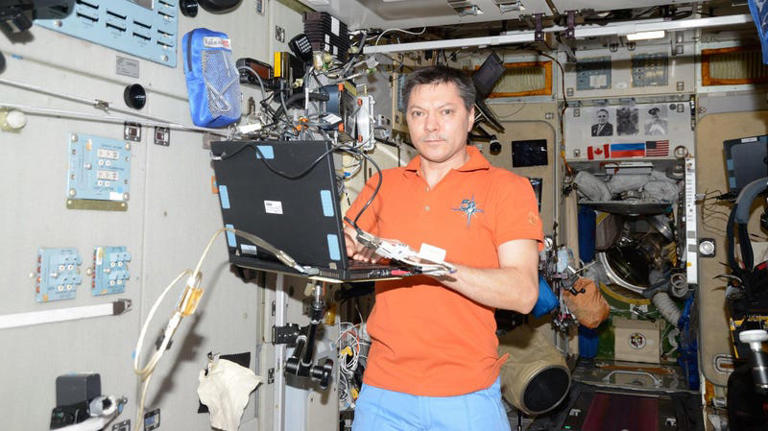
The News Of Tomorrow, Today
Subscribe to our newsletter!
Now you can get the top stories from Gizmodo delivered to your inbox. Enter your email below.
By subscribing you agree to our Terms of Use and Privacy Policy.
By subscribing you agree to our Terms of Use and Privacy Policy.
Russian Cosmonaut Sets New Time Travel Record After Spending 879 Days in Orbit

Kononenko has now spent 879 days in orbit and counting. The illustrious record was set aboard the International Space Station at 3:30 a.m. ET on Sunday, February 4, when Kononenko smashed through Padalka’s previous record of 878 days, 11 hours, 29 minutes, and 48 seconds, according to Russian state news outlet TASS.
Both Padalka and Kononenko accomplished the feat across five orbital missions, with Padalka establishing his record during an ISS mission in 2015. Russian cosmonaut Valeri Polyakov holds the record for the longest single stay in space, hanging out on the Mir space station for 437 days (January 1994 to March 1995).
Kononenko, 59, who made his first trek to space in 2008, is now on course to establish some noteworthy milestones; he’ll reach the 1,000-day mark on June 5 and the 1,100-day mark in September, when his mission ends. The cosmonaut launched to the ISS on September 15, 2023, alongside Russian cosmonaut Nikolai Chub and NASA astronaut Loral O’Hara.
“I fly into space to do what I love, not to set records,” Kononenko told TASS, “I’ve dreamt of and aspired to become a cosmonaut since I was a child. That interest—the opportunity to fly into space, to live and work in orbit—motivates me to continue flying.”
Staying weightless long-term poses health risks, but Kononenko maintains a rigorous exercise routine to counteract the “insidious” effects of microgravity, as he puts it. And despite the vast distance from Earth, technology keeps him connected to loved ones, so he doesn’t feel “deprived or isolated,” he added. Kononenko said he’s proud of his various achievements, “but I am more proud that the record for the total duration of human stay in space is still held by a Russian cosmonaut.”
Indeed, when it comes to orbital duration records, Russians tend to dominate. NASA astronaut Jeffrey Williams holds the cumulative in-space record for the United States , spending 534 days in space across four missions, while NASA’s Frank Rubio holds the single duration record for the U.S. , logging 371 consecutive days in orbit. NASA sets strict limits for how much time astronauts can spend in space over their careers, to manage the risk of radiation exposure.
Oleg Kononenko has beaten Gennady Padalka’s record for total time on spaceflights at 878 days 22h and counting… all six humans with more than two years of spaceflight accumulated are Russian citizens (Avdeev, Kaleri, Krikalyov, Malenchenko, Padalka, Kononenko) — Jonathan McDowell (@planet4589) February 4, 2024
Kononenko, by virtue of his orbital duration record, is a time traveller of sorts. When astronauts are in orbit, they are moving at high speeds relative to people on Earth; the ISS travels at 17,500 miles per hour (28,160 kilometres per hour), orbiting Earth approximately once every 90 minutes. Due to this high velocity, time passes slightly slower for astronauts in reference to people on the surface (to be clear, the subjective, personal sense of the passage of time remains constant). Physicist Albert Einstein articulated this phenomenon, known as time dilation, in his 1905 Special Theory of Relativity.
Einstein’s 1916 Theory of General Relativity imposes the opposite effect, in which the weak gravitational field makes time go slightly faster on the ISS compared to the surface. The net effect is that ISS astronauts experience time dilation that causes them to age slightly more slowly than people on Earth, but only by around 5 milliseconds, or 0.005 seconds, after six months.
So when Padalka returned to Earth in 2015 at the conclusion of his fifth and final mission, he found he missed out on 0.02 seconds of life on Earth compared to people who’d spent those years on the ground, due to the time dilation effects of high-speed space travel. That’s obviously an imperceptible amount of time, so this kind of “time travel” isn’t exactly the kind of thing portrayed in science fiction like Star Trek, Interstellar, and Disney’s Lightyear. For Kononenko, who will spend upwards of 1,100 days in orbit before coming home, this time dilation effect will be even greater (though still minuscule), marking him the greatest human time traveller to date.
To be clear, Einsteinian time dilation is a real thing. If you don’t believe it, just ask GPS satellite technicians, who must account for this phenomenon to ensure accurate global positioning services.
The Cheapest NBN 50 Plans
It’s the most popular NBN speed in Australia for a reason. Here are the cheapest plans available.
The Cosmonaut who has Spent the Most Time in Space Actually Lives in the Future
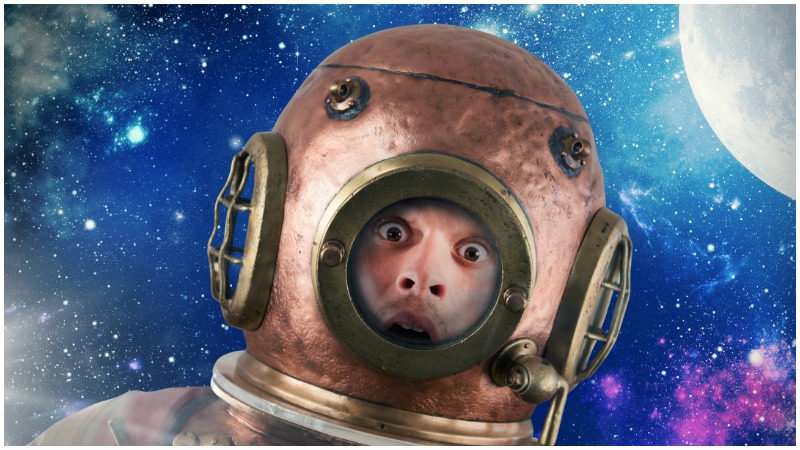
Time travel has long been a popular theme in science fiction, but can it actually exist? The Daily Mail reported that Professor Brian Cox says it can. He goes on to say that it can only take you into the future, though, and once you’re there, you can’t come back.
Speaking at the British Science Festival, Cox said that this had already been done, albeit on a very small scale. He discussed the theory of relativity, saying “If you go fast, your clock runs slow, relative to people who are still. As you approach the speed of light, your clock runs so slow you could come back 10,000 years in the future.”
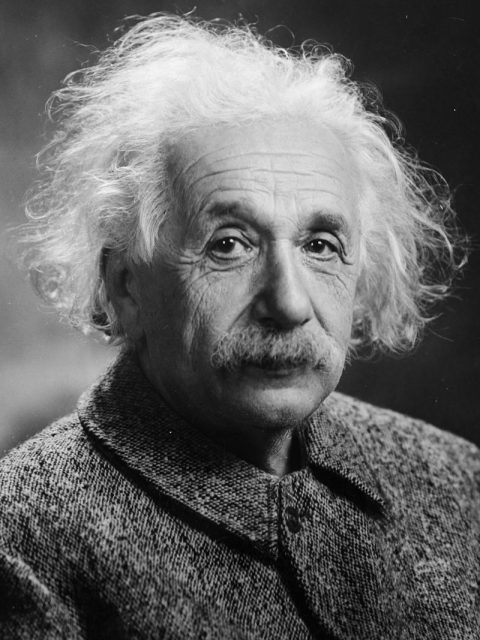
The theory is based on Einstein’s Theory of Special Relativity that is based on two principles. One is that the laws of physics don’t change, even when objects move at constant speeds to each other. The other is that the speed of light is the same for everyone, no matter how they move in relationship to the light source.
If two objects are both moving through space and want to compare what they see, the only way to do that is to compare how fast the objects are moving relative to each other. The Special Theory specifically includes that the objects’ movement must be in a straight or uniform line, and at a constant speed.
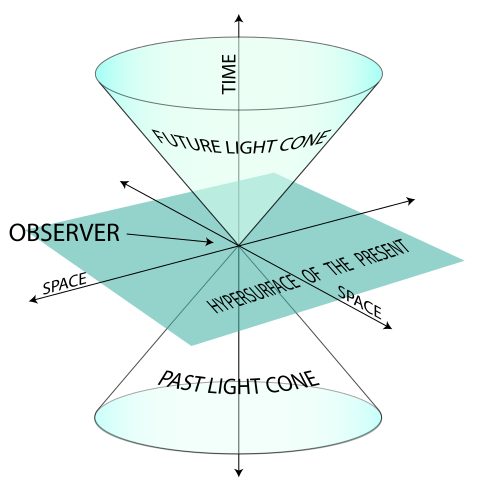
In order to travel through time, an object must approach the speed of light. As an object nears the speed of light, the clock slows down, but only for the object in motion. Everything else is still moving through time at the same rate.
This brings us to Russian Cosmonaut Sergei Krikalev, who has spent more time in orbit than anyone else in the world – 803 days, 9 hours, and 39 minutes. If you add up all the accumulated speed from the time he has spent in orbit, Krikalev has actually moved ahead into his own future by about 0.02 seconds, according to Universe Today.
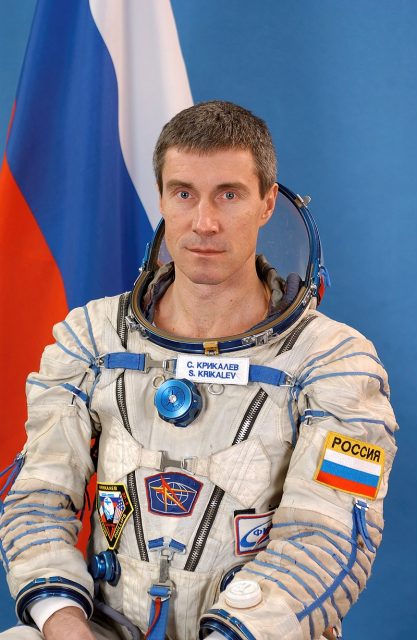
Time dilation (the relative difference in time between, say, an astronaut in orbit and everyone still on the planet) is caused either by differences in relative speed, or gravity, each of which have their own effect on time.
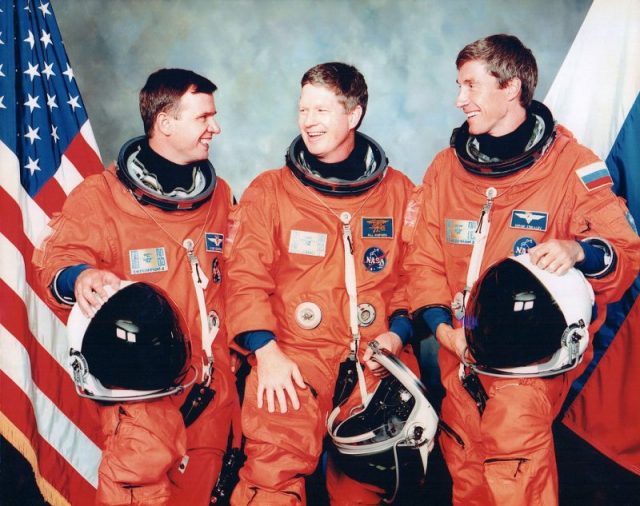
When an object is in space, whether it’s a satellite or an astronaut, it’s a little farther away from the planet’s gravitational force, so its clock runs just a tiny bit faster than it would on the Earth’s surface. When the astronaut comes back to Earth, then, they would have to “come back” to the past, relative to when they were in space.
Time dilation driven by velocity, though, means that an astronaut’s clock would run a little slower than everyone’s clocks back on Earth, meaning that the astronaut would have to go slightly into the future to catch up with the clocks on the ground.
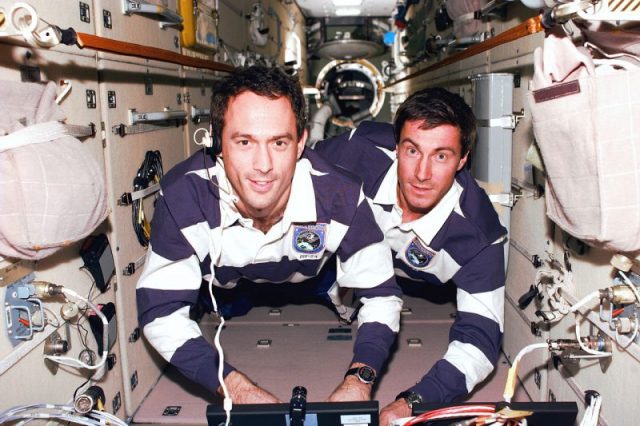
Earth’s gravity is relatively weak, and doesn’t exert much pull on bodies in space, so velocity wins out, and Krikalev’s clock runs just a little slower when he’s in orbit, which has moved him moved forward in time.
Our current technology doesn’t allow for this effect to be more than very small. We don’t have the ability to accelerate objects to speeds where the time dilation effect is more than the barest fractions of a second.
After six months on the International Space Station, for example, astronauts have aged less than people on the planet, but the difference is about .007 seconds. If we could get the space station to orbit the earth at speeds closer to the speed of light, the effect would be much more pronounced.
Read another story from us:Apollo 11 Tapes Made Public – NASA Releases 19,000 Hours of Historic Audio
All of this sounds complicated, and pretty far-removed from what most people see as day to day reality, but consider this: Sergei Krikalev is living proof that time isn’t like an arrow that just flies forever in one direction. It really is relative.

Russian cosmonaut Gennady Padalka holds the record for time spent in space, with 879 cumulative days logged from 1998 to 2015.
- ONE STRANGE ROCK
How 879 Days of Spaceflight Changed This Cosmonaut
Over 17 years and five flights, Gennady Padalka has accumulated more time in orbit than any person, ever.
Moscow, Russia — Gennady Padalka is late.
It’s not something I was expecting from the former military pilot, who is also among Russia’s most decorated cosmonauts. I pass the minutes by translating the names written in Cyrillic on the posters surrounding me in the Russian Academy of Science’s Space Research Institute : Venera , Lunokhod , RadioAstron —all programs the Russians engineered during their long and storied history of space exploration.
In the early days of the space race, the Soviets were clearly winning. They launched Sputnik, the first satellite, in 1957. And on April 12, 1961, they put the first human in orbit, when 27-year-old cosmonaut Yuri Gagarin climbed into his spherical spacecraft and took to the skies.

Will Smith will be virtually joining NASA astronaut Drew Feustel for a discussion about space, music, and more in the first ever Instagram Live from the International Space Station TODAY at 11:45 a.m. ET! Follow @NatGeo to watch live, and be sure to keep watching #OneStrangeRock Mondays at 10/9c.
Though it only lasted 108 minutes, Gagarin’s mission proved that humans could visit space and safely return—and it fueled the ongoing competition between the world’s dueling superpowers. (Here are some of the big changes in space travel since Gagarin’s first flight .)
Today, humans live in space for months at a time, and some space travelers are lucky enough to visit the realm of microgravity more than once, learning not only how to survive in a hostile and alien environment, but how to adjust to life back on Earth.
With 879 days accumulated over 17 years, Padalka has spent more time in space than any other human, ever, so he seemed like the perfect person to talk to about how spaceflight changes a person .
FREE BONUS ISSUE
Suddenly, the door bangs open and Padalka runs in, shaking off the dreary October rain and looking exactly like his photos. He mutters something about the cursed Moscow traffic, offers an apology, and then takes off, striding purposefully through a hall filled with model spacecraft and more information about the country’s adventures in interplanetary exploration.
I have no idea where he’s going, so I hustle after him with my recorder and notebook. His destination—the men’s room—is not exactly the best place for an interview, so I stop short of the door when I finally realize where he’s going. Ludmila Mekertycheva, who will be translating during our conversation, catches my eye, and we start laughing at the barely averted faux pas.
When Padalka returns, he sits down and apologizes again, as the traffic was just horrendous. He then says he won’t be able to help me much with my story.
“I’m not philosophical,” he says.
But for more than an hour, Padalka spoke generously about his time in space: his experiences, his regrets, his frustrations. At the end of our conversation, it was clear that although Padalka may not consider himself a philosopher, he certainly is a thinker who’s not afraid of introspection, or of sharing his insights. Here, on the anniversary of Gagarin’s record-setting trip, is an edited account of our conversation.
You’ve spent 879 days in space, over five flights and 17 years. Does the planet look different now than when you first flew?
No, the planet didn’t change. Seventeen years, during which I made my flights—it’s just a very short period of time. Our planet, as you know, is four billion years old. Nothing has changed.
Are there places or things on Earth that you missed, while in space? Did flying over home make you wish you were home? I wouldn’t say so. Not really. Of course you miss your home, of course you miss your family. But it’s not that every time you fly over, you want to go home and visit and see. No. Like Moscow, for instance, you fly over Moscow … but then you remember the traffic. Oh, the traffic. It is good to be out of Moscow!
No traffic jams in space.
It took, to fly over, several seconds instead of many hours and days. But, for instance, I would love sometimes to come out and face the rain. I will never be able to do that up there. Or just jump into the sea. Or maybe climb up Mount Elbrus and shout from the top, here I am!
You May Also Like

Second SpaceX megarocket launch ends with another explosion. What happens next?

In the Arizona desert, NASA prepares for walking on the moon

The spacecraft that changed how I see the universe
Many astronauts have said that seeing the planet from far away can cause them to care a bit more about it. did you think about anything like that while you were in space.
Climate change, ecological problems, I don’t consider them to be the main problems for the Earth. The bigger problem is people conflicting with each other. Look at what has happened in the world.
But if you take astronauts and cosmonauts, we work together in a very restricted space together, Americans and Russians and Canadians and Japanese. We speak a common language. We understand each other. Why can’t the same approach be applied to Earth?
What can we learn from the way the space station is run?
During the last 20 years, I’ve been working in an international project. I visited the U.S. several times per year. Canada, Europe, Japan—all the countries that participated in this project. I have lots of friends. And being in space, flying above, we knew that whatever the situation is, we knew that the life of your friend depends upon you, too .
The major thing, actually, that I have gained during space training was friendship. I started it in 1989, the end of Cold War, and our first project was the Mir shuttle project. We started to meet with the Americans and European space people. And then ISS project, it has brought us even closer to each other. And we are tied up so tightly that we can’t live in space without each other.
This is probably my best discovery, that the people of different nations, from different countries, under very severe conditions, can work very successfully, can be friendly all the time, understand each other, though their situations are sometimes really stressful.
But there’s something wrong in the fact that only such difficulties as I’ve just mentioned unite people. This is wrong. There should be something else.
You’ve spent a ton of time in space. Do you think humans are ready to be living in space for long periods of time?
In the ‘60s, we didn’t understand many, many things. We didn’t know whether a human being will withstand radiation, which is so strong up there, or whether the human being can withstand this weightlessness, and for how long? Now, since we have carried out tons of experiments, we are sure that the human being can easily live and work in the conditions of space, despite different factors which seem to be quite hostile toward the human being.
Easy to stay, easy to live, thanks to the designers’ thoughts and ideas that save us in space and provide the conditions for staying. Mikhail Kornienko and Scott Kelly, they spent one year in space without any problems , no consequences. So humankind had proved to itself that it is possible to live and work in space.
Would you want to live in space for a year, or five years?
Not five years. One year, no more. With time, it just becomes tedious. You start to miss Earth. I remember always with great pleasure, I would enter the station. I would have great pleasure and enthusiasm in work, and with the same degree of pleasure, I would leave the station.
So, you are officially a Hero of the Russian Federation ...
Uuuugh [cringes].
This is the response I get from everyone: ‘Why does everyone call me a hero?’ But I’m wondering, who are your heroes? Who do you admire?
Actually, I never had one.
Well, for instance, if somebody becomes your hero, a pattern for you to follow, you start to imitate what he does. And you lose your individuality. Everybody has his own talent. Everybody was born with some certain and very different capabilities. Somebody will become a great scientist, a Nobel prize winner, somebody will become a great mother. Somebody said that we don’t live on the minefield to follow somebody’s steps.
I was impressed at the very early stage of my space career, like the flights to space, to the moon, landing on the moon. But to say this guy, yes, I have to be similar to him? We are all talented. We are all heroes. Nyet . Don’t suppress your own talent.
Related Topics
- SPACE EXPLORATION
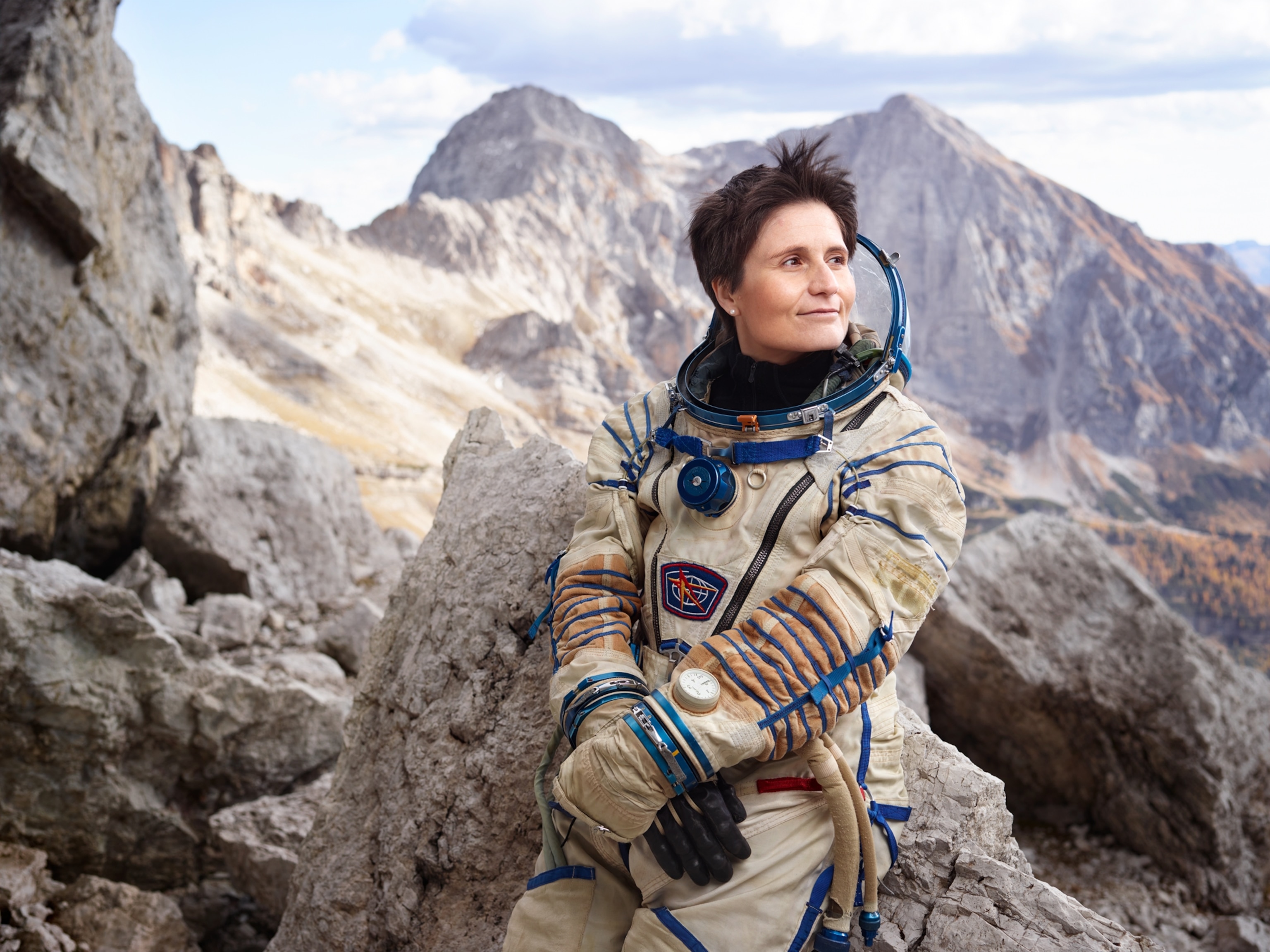
They Saw Earth From Space. Here’s How It Changed Them.

Exclusive: Here’s What It’s Like to Spend a Year in Space

Why go back to the moon? NASA’s Artemis program has even bigger ambitions

Life probably exists beyond Earth. So how do we find it?

Why did India land near the moon’s south pole?
- Environment
- Paid Content
History & Culture
- History & Culture
- History Magazine
- Mind, Body, Wonder
- Terms of Use
- Privacy Policy
- Your US State Privacy Rights
- Children's Online Privacy Policy
- Interest-Based Ads
- About Nielsen Measurement
- Do Not Sell or Share My Personal Information
- Nat Geo Home
- Attend a Live Event
- Book a Trip
- Inspire Your Kids
- Shop Nat Geo
- Visit the D.C. Museum
- Learn About Our Impact
- Support Our Mission
- Advertise With Us
- Customer Service
- Renew Subscription
- Manage Your Subscription
- Work at Nat Geo
- Sign Up for Our Newsletters
- Contribute to Protect the Planet
Copyright © 1996-2015 National Geographic Society Copyright © 2015-2024 National Geographic Partners, LLC. All rights reserved
- Election 2024
- Entertainment
- Newsletters
- Photography
- Personal Finance
- AP Investigations
- AP Buyline Personal Finance
- Press Releases
- Israel-Hamas War
- Russia-Ukraine War
- Global elections
- Asia Pacific
- Latin America
- Middle East
- Election Results
- Delegate Tracker
- AP & Elections
- March Madness
- AP Top 25 Poll
- Movie reviews
- Book reviews
- Personal finance
- Financial Markets
- Business Highlights
- Financial wellness
- Artificial Intelligence
- Social Media
The last Soviet citizen: The cosmonaut who was left behind in space
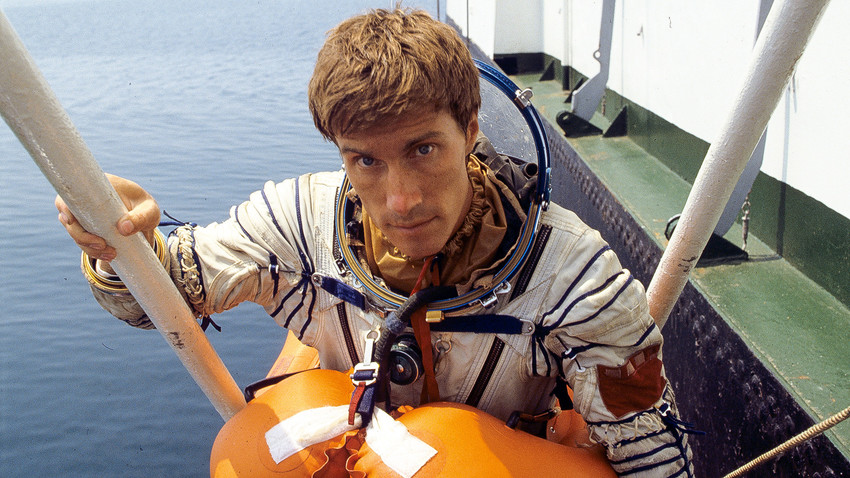
While tanks were rolling through Moscow's Red Square, people built barricades on bridges, Mikhail Gorbachev and the Soviet Union went the way of history, Sergei Krikalev was in space. 350 km away from Earth, the Mir space station was his temporary home.
He was nicknamed "the last citizen of the USSR." When the Soviet Union broke apart into 15 separate states in 1991, Krikalev was told that he could not return home because the country that had promised to bring him back home no longer existed.
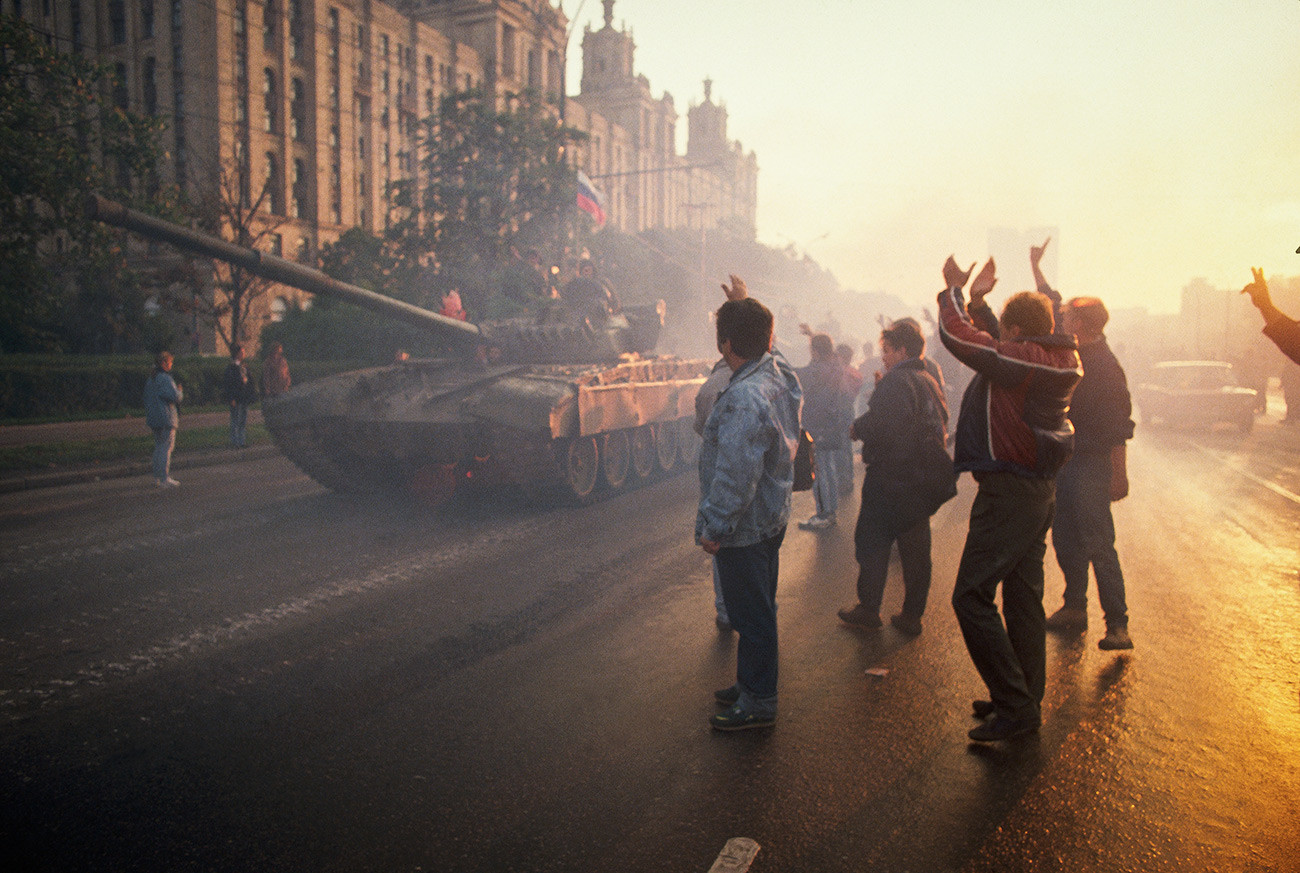
How did this happen?
Four months earlier, Krikalev, a 33-year-old flight engineer, had set off for the Mir space station from the Soviet Baikonur Cosmodrome, which is located in Kazakhstan. Krikalev's mission was supposed to last five months, and his training had not prepared him to be in space longer than this.
Then the coup d'état happened. "For us, this came as a complete surprise,” Krikalev would recall. “We did not understand what was happening. When we were discussing it, we tried to understand how it would affect the space industry."
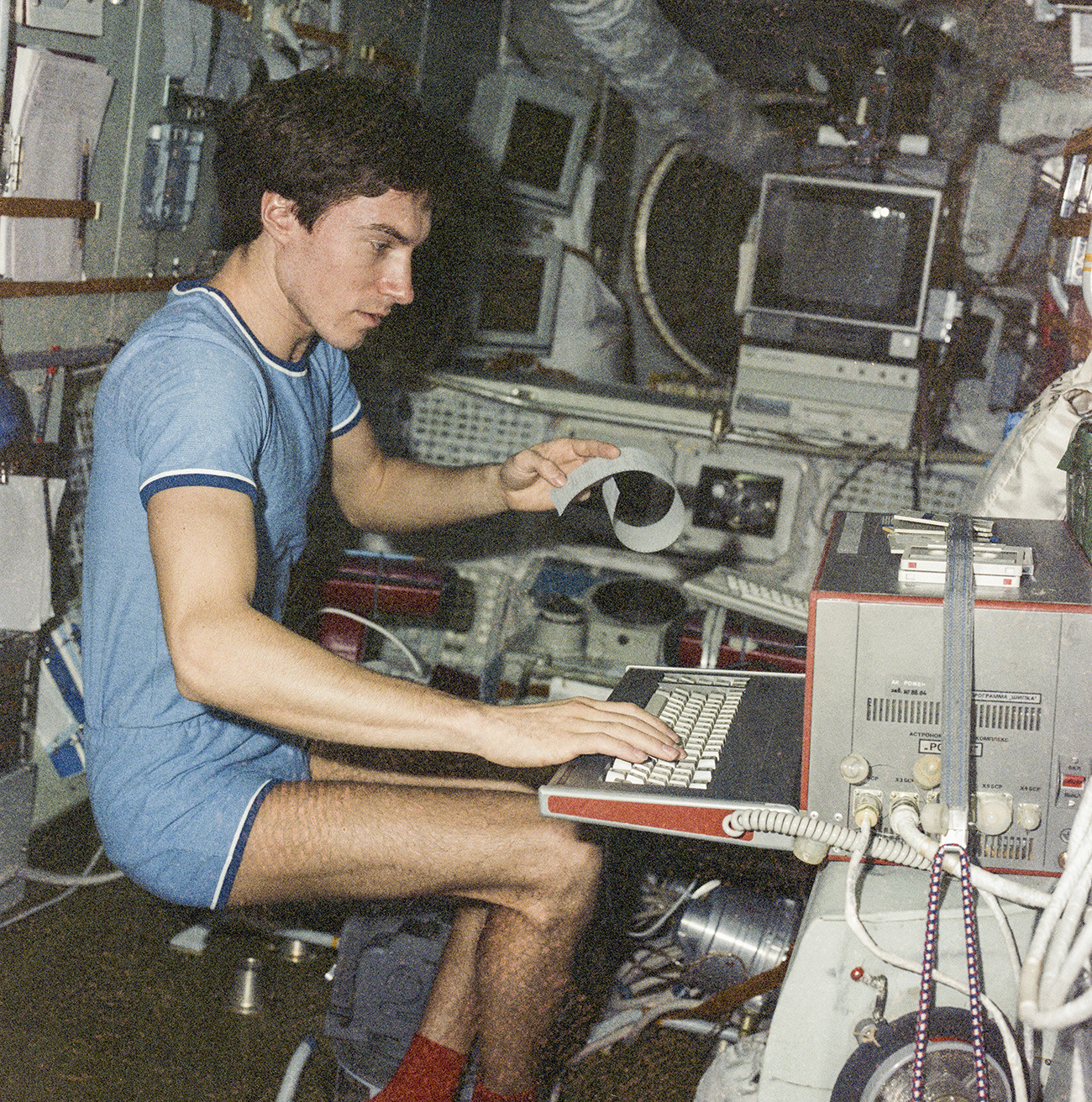
Sergei Krikalev
And affect the space industry it did. Krikalev was told there was no money to bring him back. A month later, he still got the same answer: mission control was asking him to stay out there a bit longer. Another month passed, but still the same answer yet again. "They say it’s tough for me — not really good for my health. But now the country is in such difficulty, the chance to save money must be (the) top priority,” Discover Magazine quoted him as saying.
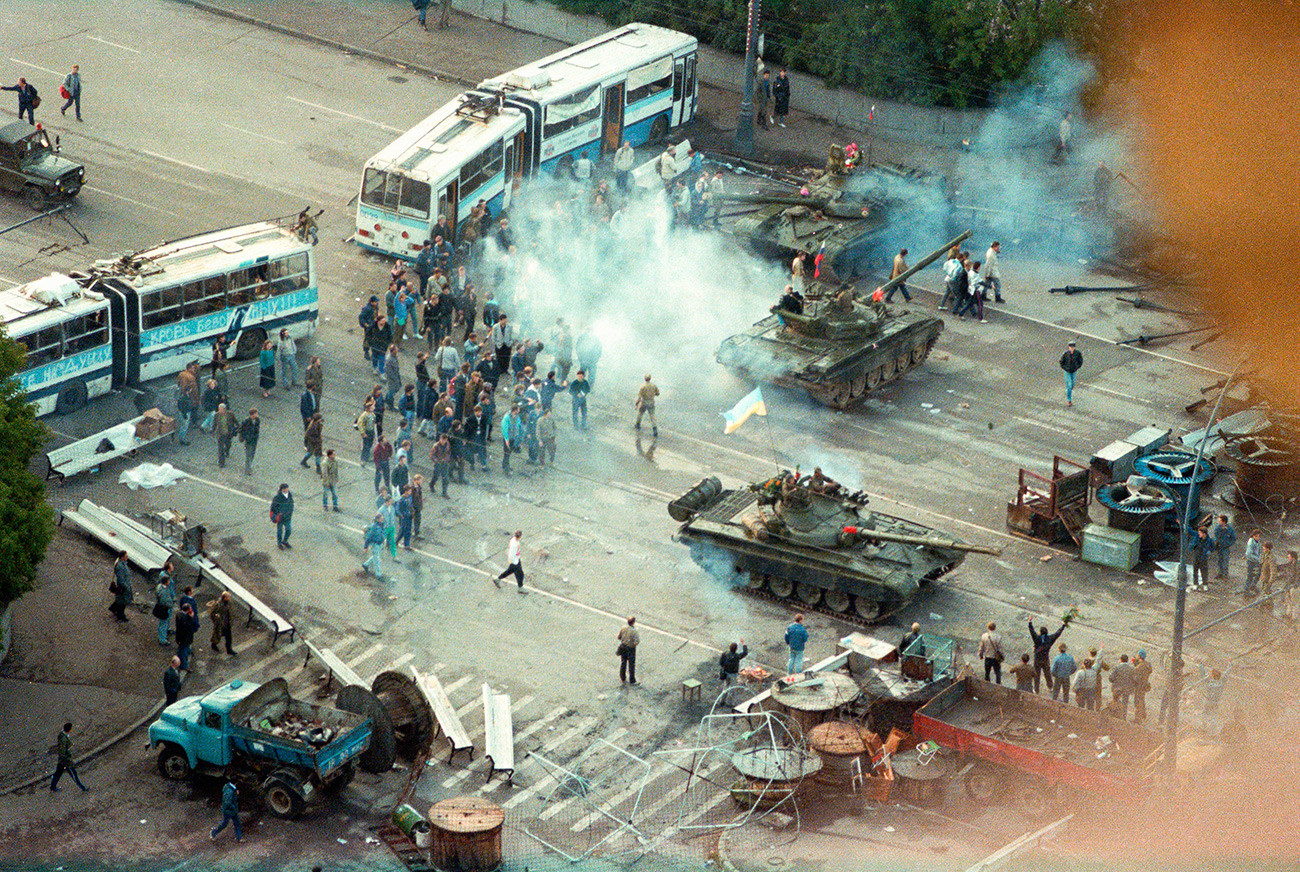
The waiting game
In fact, he could have left. There was a Raduga re-entry capsule onboard the Mir, which was designed specifically for making the return to Earth. But taking it would have meant the end of Mir since there was no one else left to look after it.
"I wondered if I had the strength to survive to complete the program. I was not sure," he said. Muscle atrophy, radiation, cancer risk, the immune system becoming weaker with every passing day—these are just some of the possible consequences of a protracted space mission.
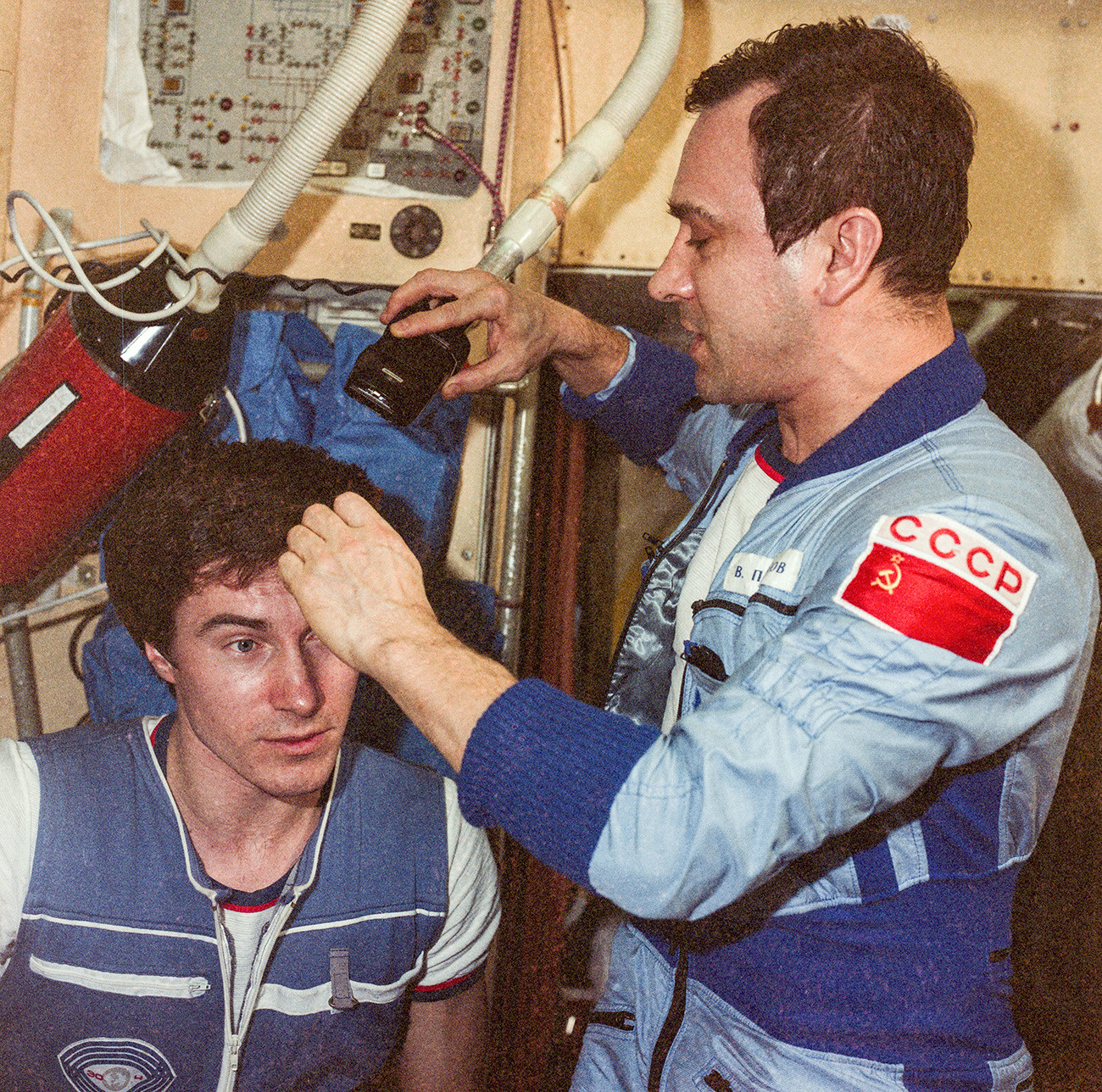
Sergei Krikalev and Valery Polykov
In Krikalev’s case, the mission lasted twice as long as originally planned. He spent 311 days, or 10 months, in space, unwittingly setting a world record in the process. Over this time, four scheduled missions were cut to two, and neither of them had space for another flight engineer.
Russia, which at that time had major money problems due to hyperinflation, was selling other countries seats to the space station on the Soyuz rocket. For example, Austria bought a seat for $7 million, while Japan purchased one for $12 million to send a TV reporter there. There was even talk of urgently selling off the Mir while it was still in working order. All of this mean that other crew members returned to Earth, while Krikalev, the only flight engineer, could not. Locked up there in space, far from home, he asked them to bring him honey in order to raise his spirits. But there was no honey, and instead they sent him lemon and horseradish.
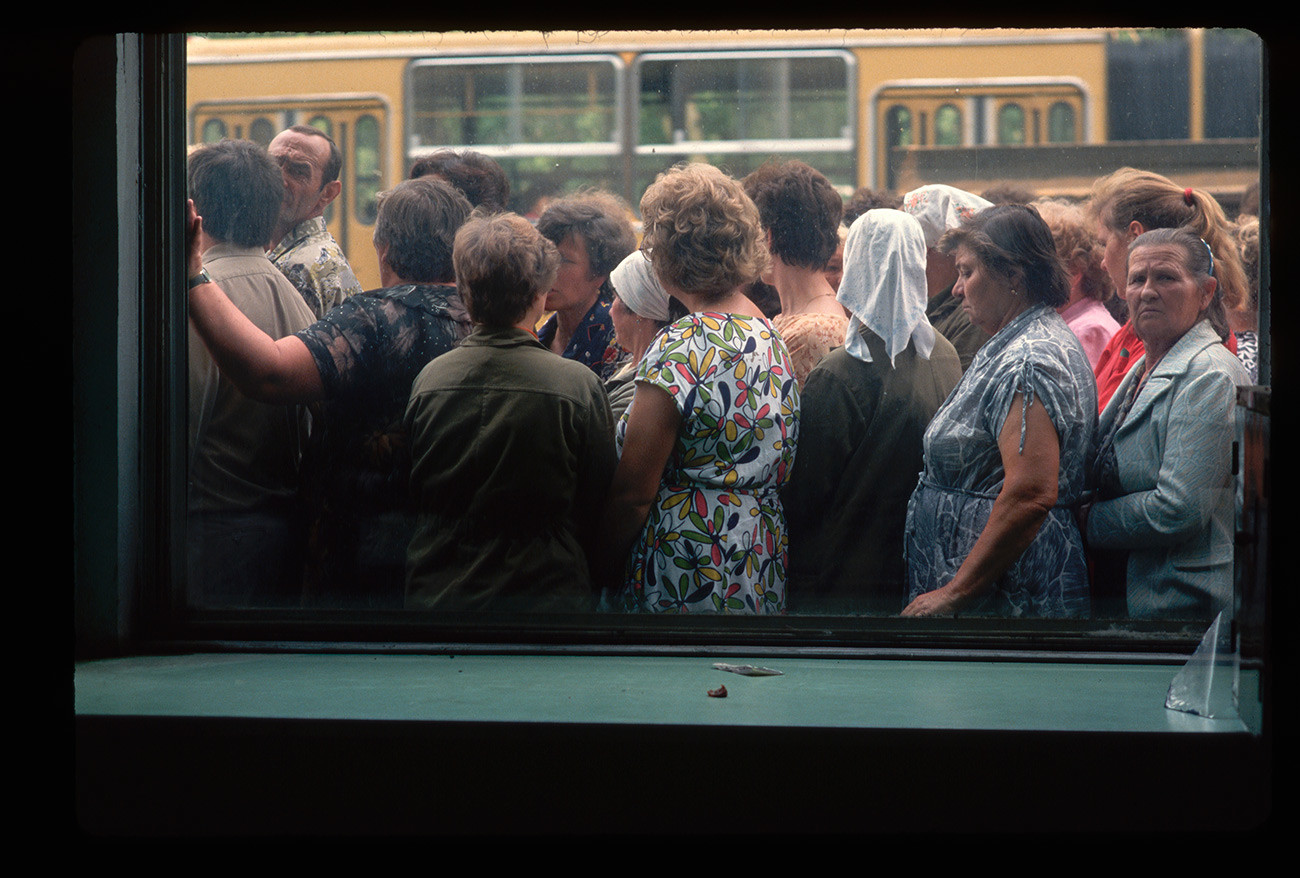
The return
Krikalev finally returned to Earth on March 25, 1992 after Germany paid $24 million to purchase a ticket for his replacement, Klaus-Dietrich Flade.
Upon landing, a man with the four letters “USSR” and a red Soviet flag on his spacesuit emerged from the Soyuz capsule. One report described his appearance as "pale as flour and sweaty, like a lump of wet dough." By then the whole world had heard about this “victim of space.” Four men helped him stand, supporting him as he placed his feet on the ground. One of them threw a fur coat over him, while the other brought him a bowl of broth.
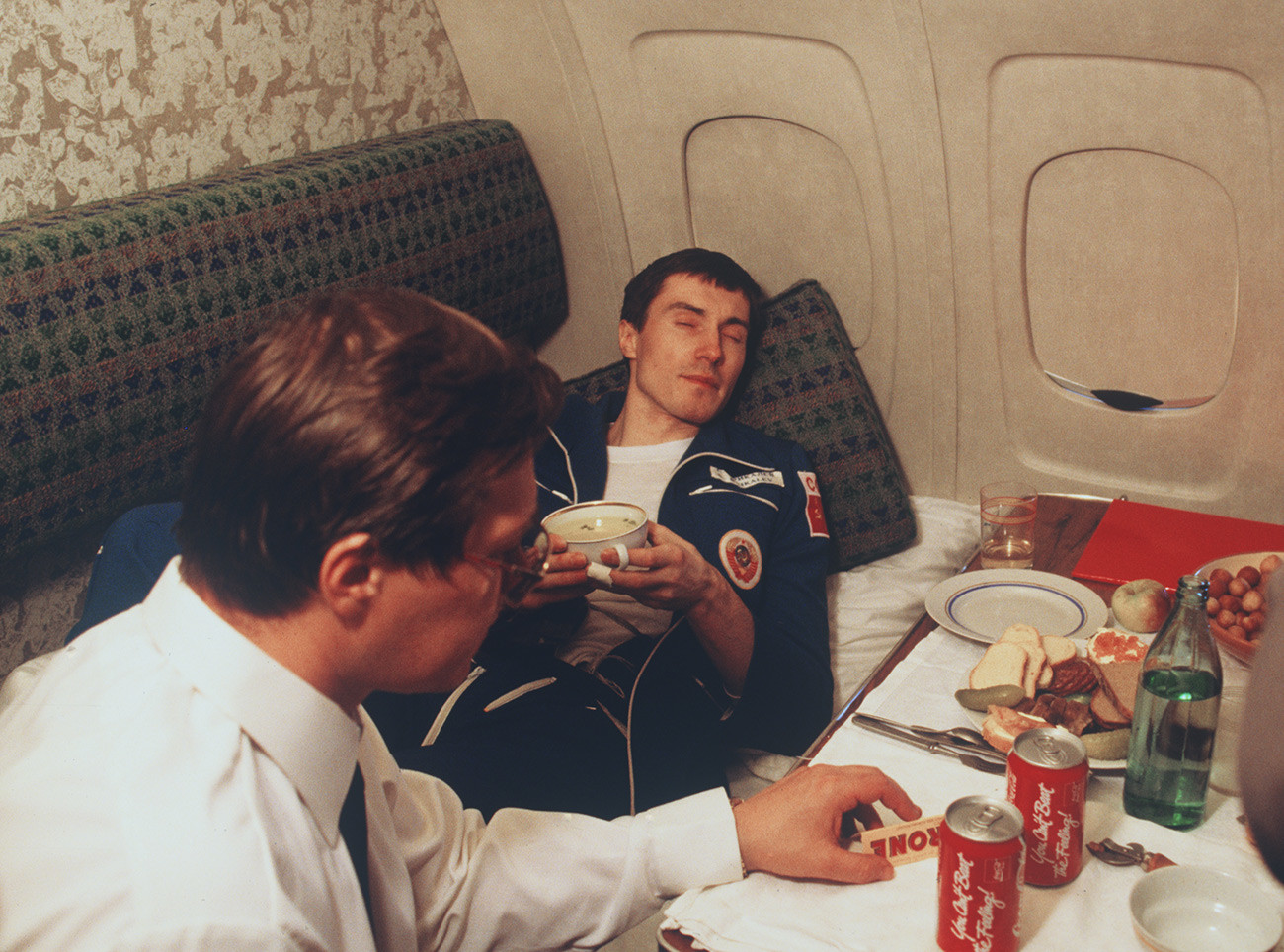
While Krikalev was away, the outskirts of Arkalykh, the city where he landed, had ceased to be Soviet and had instead become part of the independent republic of Kazakhstan. The city where he lived was no longer called Leningrad—it had become St. Petersburg instead. While in space, he had orbited Earth 5,000 times and the territory of his own country had shrunk by more than 5 million square kilometers. The Communist Party of the Soviet Union, which had ruled the country since the 1920s, had ceased to be a political monopolist and was instead just one of many parties. His monthly salary of 600 rubles, which at the time of his departure into space was considered a good salary for a scientist, had been devalued. Now a bus driver earned twice as much.
"The change is not that radical," Krikalev would say at a press conference a few days later. "I lived on the territory of Russia, while the republics were united into the Soviet Union. Now I have returned to Russia, which is part of the Commonwealth of Independent States."
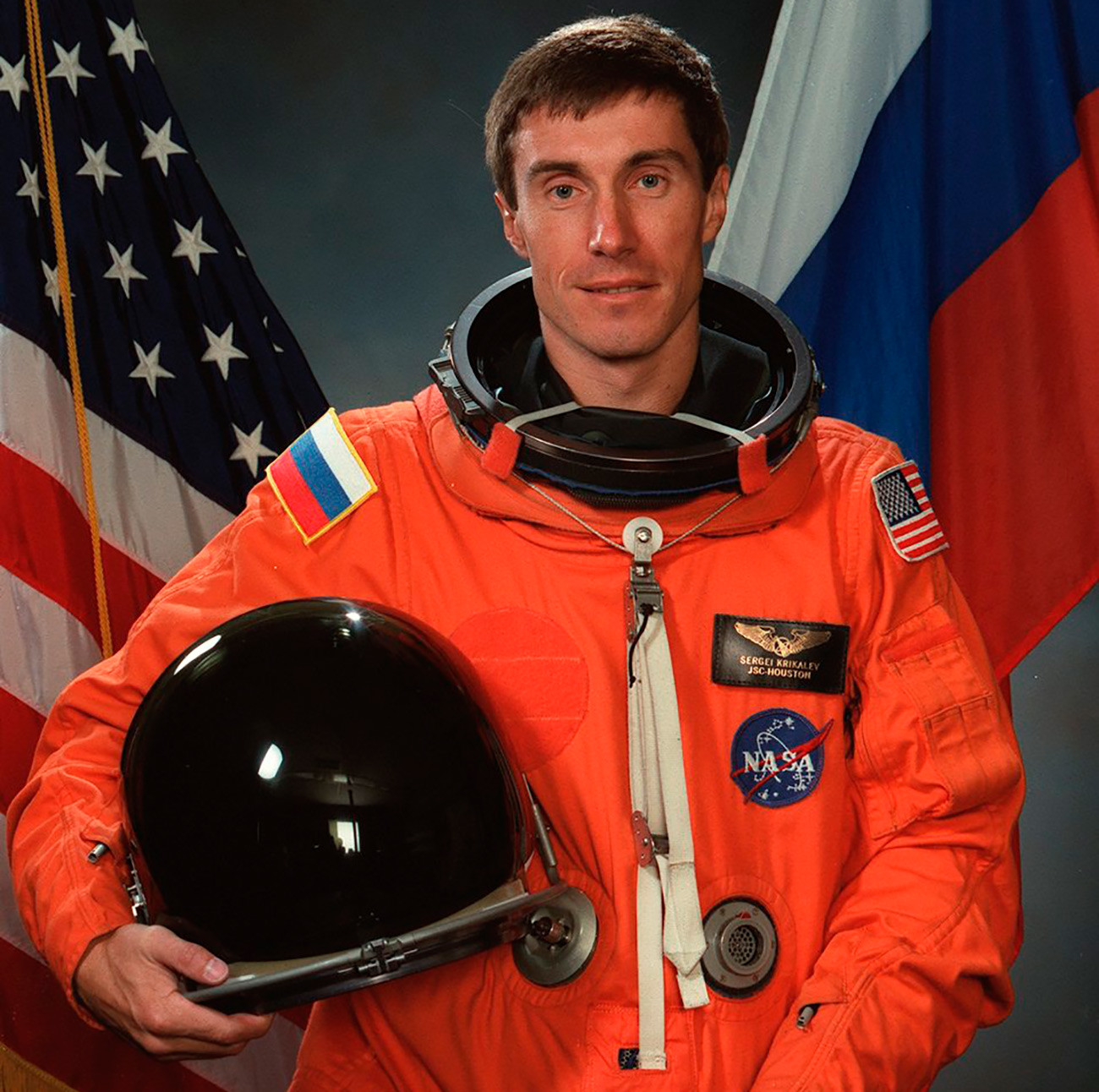
Sergey Krikalev
He would be made a Hero of Russia and two years later would go on another space mission, this time becoming the first Russian cosmonaut to fly on a NASA shuttle. And a couple of years later, the first one to spend time on the new International Space Station.
If using any of Russia Beyond's content, partly or in full, always provide an active hyperlink to the original material.
to our newsletter!
Get the week's best stories straight to your inbox
- Why are Russians so afraid of cold air drafts?
- What horrible diseases could make a comeback soon (aside from measles)?
- When do Russians allow their children to start drinking? (Spoiler: not 18)
This website uses cookies. Click here to find out more.
Want a daily email of lesson plans that span all subjects and age groups?
Is time travel possible - colin stuart.
3,850,215 Views
14,721 Questions Answered
Let’s Begin…
Time travel is a staple of science fiction stories, but is it actually possible? It turns out nature does allow a way of bending time, an exciting possibility suggested by Albert Einstein when he discovered special relativity over one hundred years ago. Colin Stuart imagines where (or, when) this fascinating phenomenon, time dilation, may one day take us.
About TED-Ed Animations
TED-Ed Animations feature the words and ideas of educators brought to life by professional animators. Are you an educator or animator interested in creating a TED-Ed Animation? Nominate yourself here »
Meet The Creators
- Educator Colin Stuart
- Director Franz Palomares
- Animation Artist Godfrey Hibbert
- Narrator Colin Stuart
More from Before and After Einstein


This thought experiment will help you understand quantum mechanics
Lesson duration 04:59
299,734 Views

The Cheerios effect
Lesson duration 05:36
4,364,359 Views

What is the coldest thing in the world?
Lesson duration 04:26
1,443,459 Views

What in the world is topological quantum matter?
Lesson duration 05:03
619,635 Views
The U.S. and Russia Signal Continued Cooperation—In Space, At Least

A lot of people overlooked the 92-year-old man who attended the Wednesday, Oct. 5 launch of the latest crew to the International Space Station (ISS). He was there among the dignitaries, and, truth be told, he was easy to miss. His name is Tom Stafford , and he looks nothing like he did back in the days of the Gemini and Apollo programs, when he flew to space four times—on one occasion commanding 1969’s Apollo 10, during which he piloted his lunar module down to within 14,325 m (47,000 ft) of the moon’s surface, in a final dress rehearsal for the Apollo 11 moon landing which would come two months later.
But he’s equally known for a mission he flew six years later, in July 1975, as one of the two commanders of the Apollo-Soyuz Test Project —the first joint, two-spacecraft mission between the U.S. and the old U.S.S.R. At the time, the feuding nations were at dagger points on Earth but wanted to show the world that in space, at least, it was possible for sworn enemies to be close friends. And it’s this same message Stafford’s presence was intended to convey this week.
Things have gotten nasty between Washington and Moscow again, ever since Russia’s February invasion of Ukraine and the sanctions regime the U.S. and other Western nations have put in place in response. U.S.-Russian collaboration aboard the ISS at first seemed to be spared the growing enmity, but in July , Dmitry Rogozin, former head of Roscosmos, the Russian Space Agency, threatened that his country would quit the ISS partnership in response to the sanctions, with the split set to happen sometime after 2024. The high-ground of space, it seemed, had become just one more arena for the low business of politics.
But things have brightened since. In July, Rogozin was replaced as head of Roscosmos by Yury Borisov, and no sooner did the new boss take over than Russia backed off of its threat to abandon the ISS, saying merely that it has designs to build its own station—which may not be complete until the end of the decade—and only when that happens will it dissolve the space station partnership.
More immediately, Roscosmos and NASA also agreed to a new seat-swapping arrangement under which a NASA astronaut would fly aboard each Soyuz spacecraft headed for the ISS, and a Russian cosmonaut would, in turn, fly aboard each SpaceX Crew Dragon spacecraft. Just over two weeks ago , astronaut Frank Rubio took off aboard an ISS-bound Soyuz, and on-board the Crew Dragon for Wednesday’s launch was rookie cosmonaut Anna Kikina, only the fifth Russian woman in space.
Stafford, who was invited to the launch this week as a living symbol of U.S.-Russian space collaboration, did not address the press after the launch. But Sergei Krikalev, the head of Roscosmos’s human space flight program, did. And he clearly had the accomplishments of the veteran astronaut on his mind.
“We just continue what we started many years ago in 1975, when the Apollo-Soyuz crew worked together,” he said at a press conference after the launch. That continuation extends through 2024 at least, with more seat-swaps firmly scheduled, and others likely to follow.
The joint missions have more than symbolic value. Flying Americans and Russians together ensures that there is always at least one crew member aboard the station from each country, which is essential for station operations, since NASA astronauts are more familiar with the workings of the U.S. segment of the station, and Roscosmos cosmonauts are more adept at operating the Russian modules. None of this does away with geopolitics entirely, of course. On the ground, 400 km (250 mi.) below the ISS, the war in Ukraine continues to rage. But up above, at least, there is enduring peace.
This story originally appeared in TIME Space, our weekly newsletter covering all things space. You can sign up here.
More Must-Reads From TIME
- Exclusive: Google Workers Revolt Over $1.2 Billion Contract With Israel
- Jane Fonda Champions Climate Action for Every Generation
- Stop Looking for Your Forever Home
- The Sympathizer Counters 50 Years of Hollywood Vietnam War Narratives
- The Bliss of Seeing the Eclipse From Cleveland
- Hormonal Birth Control Doesn’t Deserve Its Bad Reputation
- The Best TV Shows to Watch on Peacock
- Want Weekly Recs on What to Watch, Read, and More? Sign Up for Worth Your Time
Write to Jeffrey Kluger at [email protected]
You May Also Like
The Russian Cosmonaut Who Time Traveled ‘Into the Future’
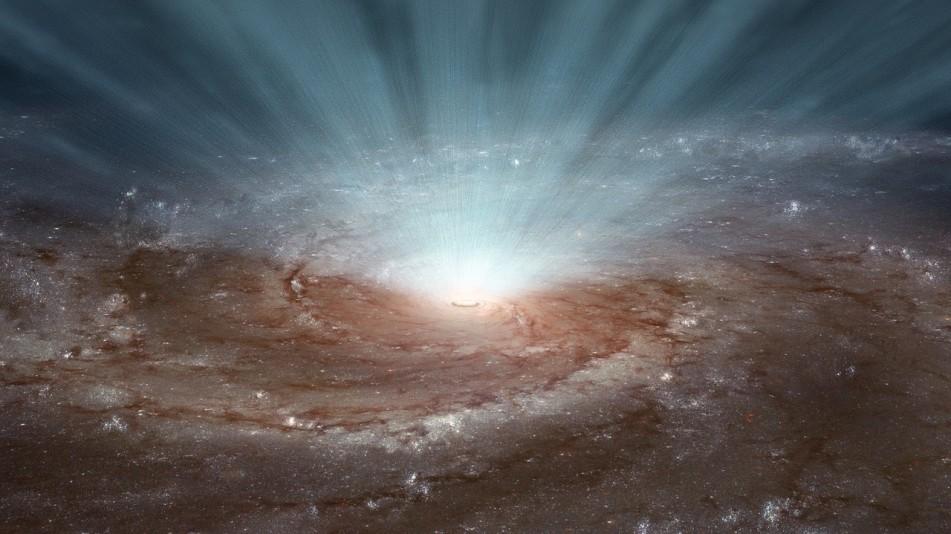
Time travel is something that is often presented as a fantasy. The idea that a human being can travel into the future is believed to be impossible. However, you may be surprised to know that a Russian cosmonaut has already traveled into the future.
The time traveler
Sergei Krikalev is a veteran space traveler who has spent 803 days, 9 hours, and 39 minutes on the International Space Station (ISS). The ISS orbits the Earth at a speed of around 7.66 km/s. Due to the extended stay in space, scientists theorized that when Krikalev came back to Earth from his last mission, he was 0.02 seconds ahead of Earth time.
“When astronauts and satellites orbit the Earth, they are slightly further away from the center of the planet — compared to people on the ground — and so they actually experience less gravitational time dilation. This means the astronauts’ time would run slightly faster, and when they return to Earth, they’d have to ‘come back’ to the past compared to when they were in space,” according to Universe Today .
Krikalev retired from spaceflight in 2007. At present, he is the Vice President of Space Corporation Energia, a Russian manufacturer of space station components, spacecraft, and ballistic missiles. Though being ahead of everyone by 0.02 seconds does not confer Krikalev any significant advantage, he has etched his name in history as someone who has traveled through time. So can we go further into the future? Physicists theorize that it is possible.

According to current theories, traveling further into the future can only be done if one were to spend some time near a black hole. “You hang out [next to a black hole] for a while, you come back, get out of your ship, and it will be any number of years into the future, whatever you want all depending on how close you got to the edge of the black hole and how long you hung out there. That is time travel to the future,” Brian Greene, theoretical physicist and string theorist from Columbia University, said in a statement ( Express ).
GPS satellites often “travel” into the future since they orbit the Earth at a speed of 14,000 km/h. This essentially cuts off several microseconds from their clocks compared to the clocks on Earth. As such, both clocks have to be synchronized quite often to ensure they follow the same time.
Simulating reversal
Recently, a team of scientists from the Moscow Institute of Physics and Technology (MIPT) succeeded in simulating the reversal of time. The simulation was done using a quantum computer of two qubits in which the computer was subjected to four stages — a starting point, degradation, time reversal, and chaos.
In the reversal phase, the researchers launched a program that enabled the computer to evolve backward from chaos to order. As such, instead of degenerating into chaos, the qubits ended up being restored to their original state, essentially coming back to the past.

“During the research, scientists who took part in the study tried to analyze the possibility of violating the second law of thermodynamics. This second law states that the entropy or disorder of a closed system will increase over time. This increase in entropy establishes the ‘arrow of time,’ which is basically the irreversible progress from the past to the future,” according to IB Times .
The researchers stressed that what they had done was only a simulation of reversal and that it does not mean humans now can travel to the past. However, the experiment will have some serious ramifications on our understanding of time.
Follow us on Twitter , Facebook , or Pinterest
Troy was born and raised in Australia and has always wanted to know why and how things work, which led him to his love for science. He is a professional photographer and enjoys taking pictures of Australia's beautiful landscapes. He is also a professional storm chaser where he currently lives in Hervey Bay, Australia.
View all posts
Latest articles
Dreams that predict the future: what does science have to say.
Viena Abdon
Li Bi and the Wisdom of Non-Attachment to Power and Position
Why your high-school textbook was wrong about the shape of earth’s orbit, a stolen watch, a paper bag, and a teacher’s lesson in compassion.
Mikel Davis
Foods to Incorporate in Your Diet That Help Prevent Blood Clots
Hermann Rohr
RECOMMENDATIONS FOR YOU

Lu Yu, the Tea Sage Who Convinced the World to Drink Tea, Not Eat It

About | Donate | Privacy Policy | Terms of Use | Copyright Policy and Infringement Notification
© 2024 nspirement. All rights reserved
Featured articles

April 11, 2024

- Skip to main content
- Keyboard shortcuts for audio player
NASA has been asked to create a time zone for the moon. Here's how it would work
Kai McNamee

A new lunar time zone has been pitched for the moon. John Raoux/AP hide caption
A new lunar time zone has been pitched for the moon.
As the world prepares for a new space race , the Biden Administration is calling on NASA to create a moon-based time standard. That's because time ticks by faster on the moon relative to Earth.
The difference is very small, but space flight needs extreme precision. And when lunar spacecraft and satellites operate on an Earth-based time standard, that difference could create problems, according to a memo issued by the White House Office of Science and Technology Policy this month.

If daylight saving time seems tricky, try figuring out the time on the moon
The new lunar time zone, Coordinated Lunar Time (LTC), is all about ensuring the success of future, multinational missions to the moon, said Michelle Hanlon, the executive director of the Center for Air and Space Law at the University of Mississippi.
"It's not just the U.S. going back to the moon by itself. We are going as the Artemis partners — right now, 36 nations — and they are spread out across the globe. So we've got to figure out one way where we can talk to everybody in the same time," she said.
The LTC would not be like a regular time zone on Earth. On Earth, those zones are set using Coordinated Universal Time (UTC), which reflects a weighted average measurement of hundreds of extremely precise atomic clocks placed around the globe.

The creation of a lunar time zone would require international agreements. NASA Johnson hide caption
The creation of a lunar time zone would require international agreements.
Due to the moon's lower gravity and its motion relative to Earth, moon time passes 56 microseconds faster each earth day . As a result, an atomic clock on Earth would run at a different rate than an atomic clock on the moon.
Similar to how UTC is determined, the memo suggests "an ensemble of clocks" deployed to the moon might be used to set the new time standard.
The memo also notes the creation of the LTC would require international agreements.
Hanlon said taking this step towards a unified approach to space travel is important for establishing international collaboration on the moon.
"I hope that this is the beginning of a collaboration. When we think about the geopolitical circumstances down here on Earth, it doesn't look particularly hopeful," she said.

Finding Time
Researchers say time is an illusion. so why are we all obsessed with it.
Hanlon said that because several players in today's space race are looking to land near the moon's south pole, figuring out an international standard will be crucial.
"We all agree that space should be exclusively for peaceful purposes. We all agree that we have free access and freedom of exploration and use," she said.
"Let's all agree on how we're going to tell time on the moon."
- space exploration
- White House

Soviet-era cosmonaut Vladimir Aksyonov, who flew into space twice, dies at 89
'His life's path was filled with honest service to the Motherland, creative work and dedication to his chosen cause.'
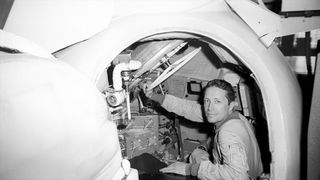
Soviet-era cosmonaut Vladimir Aksyonov, who flew into space twice — once aboard a refurbished spacecraft and then on the first crewed test of a new model — has died at the age of 89. Aksyonov's death on Tuesday (April 9) was announced by Roscosmos , Russia's federal space corporation. "On behalf of the Roscosmos state corporation and on my own behalf, I express deep condolences in connection with the death of the twice Hero of the Soviet Union, pilot-cosmonaut of the USSR, lieutenant colonel-reserve engineer Vladimir Viktorovich Aksyonov," said Yury Borisov , director general of the agency. "His life's path was filled with honest service to the Motherland, creative work and dedication to his chosen cause." Selected to become a cosmonaut with the Soviet Union's fifth group of civilian flight engineers, Aksyonov lifted off on the first of his two spaceflights on board Soyuz 22, a spacecraft that first served as the backup to the Soviet side of the Apollo-Soyuz Test Project (ASTP), the first mission flown with the United States . Instead of being outfitted with a docking collar, the capsule carried a specialized camera.
Related: Apollo-Soyuz Test Project: Russians, Americans meet in space
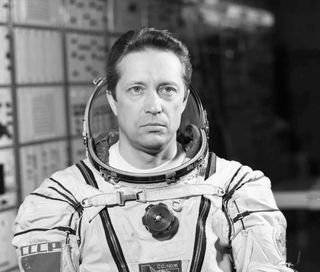
Lifting off with mission commander Valery Bykovsky on Sept. 15, 1976, Aksyonov spent more than a week photographing the planet from orbit. During the Earth-observation mission, Bykovsky and Aksyonov took 2,400 photographs while flying over 30 geographic areas, including Siberia, Kazakstan and Central Asia. Other targets were areas within the Soviet Union that, according to contemporary media reports, had not been photographed from space before. Bykovsky and Aksyonov also observed fish swimming in an onboard aquarium, grew plants in an centrifuge and monitored the effects of cosmic rays on their vision, a concern first raised by the United States after Apollo astronauts shared their experiences flying to and from the moon. On Sept. 23, eight days after launching on his first mission, Aksyonov landed with Bykovsky on the steppe of Kazakhstan. Aksyonov's next flight came four years later. Soyuz T-2 was the 12th mission to the Soviet Salyut 6 space station and the 10th to successfully dock at the orbiting outpost. Although he was the more experienced cosmonaut, Aksyonov again flew as a flight engineer, this time paired with first-time flier and commander Yuri Malyshev . The nearly four-day mission lifted off on June 5, 1980, and spent only two days at the station, where Malyshev and Aksyonov visited with the Salyut's resident crew of Leonid Popov and Valery Ryumin .
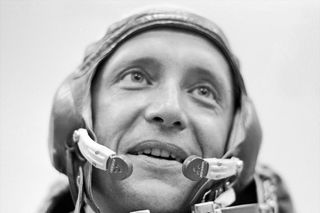
The remainder of the flight — before and after linking up with Salyut 6 — served as a shakeout cruise for the Soyuz T-class spacecraft, which sported an upgraded computer, solid state electronics and the return of solar arrays to enable longer-duration flights. Malyshev and Aksyonov were the first to fly the Soyuz T, after an uncrewed test flight. The two returned to Earth on June 9, 1980, marking the last time Aksyonov was aboard a spacecraft. He logged a total of 11 days, 20 hours and 11 minutes in space over the course of his two missions and 189 revolutions around the planet. Vladimir Viktorovich Aksyonov was born on Feb. 1, 1935, in Giblitsy, within the Kasimovsky District of the former Soviet Union. He graduated from the Mytishchi Engineering College in 1953, the 10th Military Aviation School for Primary Pilot Training 1955 and All-Union Correspondence Polytechnic Institute with a degree in mechanical engineering in 1963. In 1962, Aksyonov began working for OKB-1 (today, RSC Energia), where he test-flew aircraft and conducted simulations in zero gravity. In 1966, the Soviet government decided that civilians (and former military personnel) could become crew members on Soyuz spaceflights, which is what led to Aksyonov joining the cosmonaut corps.
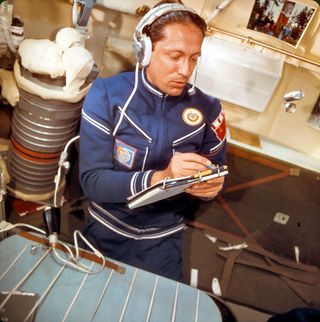
— Russian and Soviet space stations throughout history
— Soyuz spacecraft: Backbone of Russian space program
— The Top 10 Soviet and Russian space missions
Aksyonov retired from the corps on Oct. 17, 1988, and became the director of the State Research Center for the Study of Natural Resources of the State Hydrometeorological Service. He then worked as the general director of NPO Planeta, before serving as deputy chairman of the executive committee of the Cosmos Association. Aksyonov also served in leadership roles for the Soviet Peace Fund, the public organization "Spiritual Movement of Russia" and the Institute for Security and Sustainable Development of Science Foundation. For his service to the space program, Aksyonov was twice named Hero of the Soviet Union and was bestowed with two Orders of Lenin, a medal "For Merit in Space Exploration" and the title Pilot-Cosmonaut of the USSR, among his other honors. Aksyonov was married to Marina Fyodorova, and together they had two children, Valeri and Sergei. "He will remain in our memory as an honest, hardworking, fair and sincere man," said Borisov. "The good memory of Vladimir Viktorovich Aksenov will forever remain in our hearts, and his life will be a worthy example for future generations of space explorers."
Follow collectSPACE.com on Facebook and on Twitter at @ collectSPACE . Copyright 2024 collectSPACE.com. All rights reserved.
Get the Space.com Newsletter
Breaking space news, the latest updates on rocket launches, skywatching events and more!
Join our Space Forums to keep talking space on the latest missions, night sky and more! And if you have a news tip, correction or comment, let us know at: [email protected].

Robert Pearlman is a space historian, journalist and the founder and editor of collectSPACE.com , an online publication and community devoted to space history with a particular focus on how and where space exploration intersects with pop culture. Pearlman is also a contributing writer for Space.com and co-author of "Space Stations: The Art, Science, and Reality of Working in Space” published by Smithsonian Books in 2018. He previously developed online content for the National Space Society and Apollo 11 moonwalker Buzz Aldrin, helped establish the space tourism company Space Adventures and currently serves on the History Committee of the American Astronautical Society, the advisory committee for The Mars Generation and leadership board of For All Moonkind. In 2009, he was inducted into the U.S. Space Camp Hall of Fame in Huntsville, Alabama. In 2021, he was honored by the American Astronautical Society with the Ordway Award for Sustained Excellence in Spaceflight History.
Boeing's 1st Starliner astronaut launch delayed again, to May 6
We asked over 50 women space leaders for words of inspiration. Here's what they told us
My formal 2024 solar eclipse apology
Most Popular
By Tereza Pultarova April 11, 2024
By Keith Cooper April 11, 2024
By Jamie Carter April 11, 2024
By Mike Wall April 11, 2024
By Robert Z. Pearlman April 11, 2024
By Joe Rao April 10, 2024
By Robert Lea April 10, 2024
By Mike Wall April 10, 2024
By Brett Tingley April 10, 2024
By Jamie Carter April 10, 2024
By Jeff Spry April 10, 2024
- 2 Achoo! Baby star 'sneezes' tell astronomers a lot about their development
- 3 A NASA spacecraft spotted something weird orbiting the moon. It was just a lunar neighbor (photos)
- 4 Monster star gains magnetic personality following stellar merger
- 5 Car-sized asteroid gives Earth a super-close shave with flyby closer than some satellites
Russia Launches First Angara-A5 Space Rocket From Far East Cosmodrome

Angara-A5 rocket blasts off from its launchpad at the Vostochny Cosmodrome in the far eastern Amur region, Russia, April 11, 2024. Roscosmos/Ivan Timoshenko/Handout via REUTERS ATTENTION EDITORS - THIS IMAGE HAS BEEN SUPPLIED BY A THIRD PARTY. MANDATORY CREDIT. PICTURE WATERMARKED AT SOURCE.
By Anastasia Teterevleva and Guy Faulconbridge
MOSCOW (Reuters) -Russia on Thursday test-launched its Angara-A5 space rocket for the first time from the Vostochny Cosmodrome in the Far East, successfully putting a test load in low orbit as part of an effort to develop a new post-Soviet launch vehicle.
The test launch of the Angara-A5, Russia's first post-Soviet space rocket, was aimed at underscoring Moscow's ambition to be a major space power and the growing importance of Vostochny, situated in the forests of the Amur region of Russia's Far East.
But two launches of the Angara rocket were aborted at the very last minute on both Tuesday and Wednesday due to a malfunction of a pressurising system and then a problem with the engine launch-control system.
To the relief of Russian space officials, they were third time lucky on Thursday, just hours before Russia celebrates Cosmonaut Day marking the day 63 years ago that the Soviet Union's Yuri Gagarin became the first man in outer space.
"There is an engine start, the flight is normal," mission control said as the rocket blasted off to space, reaching more than 25,000 kilometres (15,500 miles) per hour in minutes.
Photos You Should See - April 2024

The Latest Photos From Ukraine

"The fuel tanks detached and then the central section detached and a test load was placed into orbit," Russia's space agency, Roscosmos, said.
"The rocket worked normally," Roscosmos said. "With this launch, flight design tests of the Amur space rocket complex with Angara heavy-class launch vehicles on Vostochny began."
The 54.5-metre (178.81-foot) three-stage rocket, with a mass of about 773 tonnes, can carry about 24.5 tonnes into space, according to Russia's Kommersant newspaper.
The defence ministry is also involved in the project, which Moscow says uses only Russian components and less environmentally damaging fuel and will replace the Proton M as Russia's heavy-lift rocket, which has been in operation since the mid-1960s.
Russia began the Angara project a few years after the 1991 break-up of the Soviet Union as a Russian-made launch vehicle that would ensure access to space even without the Baikonur Cosmodrome, which Russia rents from Kazakhstan.
"The creation of the Angara space rocket complex (KRK) is a task of special national importance," Roscosmos said.
"The commissioning of the Angara spacecraft will allow Russia to launch spacecraft of all types from its territory and provide our country with independent guaranteed access to space."
The first Angara-A5 test flight took place in 2014, and another followed in 2020, both from Plesetsk in northern Russia. A partial test followed in 2021 that was a failure.
(Reporting by Anastasia Teterevleva; editing by Guy Faulconbridge; editing by Mark Heinrich)
Copyright 2024 Thomson Reuters .
Join the Conversation
Tags: Russia , United States , Kazakhstan , Europe
America 2024

Health News Bulletin
Stay informed on the latest news on health and COVID-19 from the editors at U.S. News & World Report.
Sign in to manage your newsletters »
Sign up to receive the latest updates from U.S News & World Report and our trusted partners and sponsors. By clicking submit, you are agreeing to our Terms and Conditions & Privacy Policy .
You May Also Like
The 10 worst presidents.
U.S. News Staff Feb. 23, 2024

Cartoons on President Donald Trump
Feb. 1, 2017, at 1:24 p.m.

Photos: Obama Behind the Scenes
April 8, 2022

Photos: Who Supports Joe Biden?
March 11, 2020

Johnson Turns to Trump Amid GOP Dissent
Aneeta Mathur-Ashton April 11, 2024

A Reprieve for Inflation?
Tim Smart April 11, 2024

Embattled Johnson Bruised Again
Aneeta Mathur-Ashton April 10, 2024

What to Know About Biden's State Dinner
Laura Mannweiler April 10, 2024

Fed: Inflation Path ‘Somewhat Uneven’
Tim Smart April 10, 2024

No Letup From Inflation in March


COMMENTS
If you add up the accumulated speed cosmonaut Sergei Krivalev has traveled in space - the most of any human with a total time spent in orbit of 803 days 9 hours and 39 minutes - he has ...
Sergei Konstantinovich Krikalev (Russian: Сергей Константинович Крикалёв, also transliterated as Sergei Krikalyov; born 27 August 1958) is a Russian mechanical engineer, former cosmonaut and former head of the Yuri Gagarin Cosmonaut Training Center.. As a prominent rocket scientist, he is a veteran of six space flights and ranks fourth to Gennady Padalka, Oleg ...
The time-travelling astronaut. Stories from Physics for 11-14 14-16. Russian cosmonaut Sergei Krikalev holds the record for time spent in orbit around the Earth: 803 days. It is calculated that the time dilation caused by his orbital motion means that Krikalev is 0.02 seconds younger than other people born at the same time as him on Earth.
Kononenko has now spent 879 days in orbit and counting. The illustrious record was set aboard the International Space Station at 3:30 a.m. ET on Sunday, February 4, when Kononenko smashed through ...
PROOF: This Russian Has Travelled Forwards In Time. Huffington Post UK. 23/10/2013 07:28am BST. | Updated December 23, 2013. Russian cosmonaut Sergei Krikalev has spent more time in orbit around ...
Time traveler. Cosmonaut Sergei Avdeyev spent a total of 748 days on the Russian space station Mir during three separate missions. Because Mir was moving relative to Earth, it was also a time machine. Avdeyev is 0.02 seconds younger than he would have been had he never traveled in space. An essential element of exciting science fiction is ...
Russian cosmonaut Oleg Kononenko inside the ISS Zvezda module in 2019. As of Sunday, Russian cosmonaut Oleg Kononenko has clocked more time in Earth orbit than any other astronaut, surpassing the ...
Recent News. Yuri Gagarin (born March 9, 1934, near Gzhatsk, Russia, U.S.S.R. [now Gagarin, Russia]—died March 27, 1968, near Moscow) was a Soviet cosmonaut who in 1961 became the first man to travel into space. The son of a carpenter on a collective farm, Gagarin graduated as a molder from a trade school near Moscow in 1951.
The illustrious record was set aboard the International Space Station at 3:30 a.m. ET on Sunday, February 4, when Kononenko smashed through Padalka's previous record of 878 days, 11 hours, 29 ...
Yuri Alekseyevich Gagarin (9 March 1934 - 27 March 1968) was a Soviet pilot and cosmonaut who, aboard the first successful crewed spaceflight, became the first human to journey into outer space.Travelling on Vostok 1, Gagarin completed one orbit of Earth on 12 April 1961, with his flight taking 108 minutes. By achieving this major milestone for the Soviet Union amidst the Space Race, he ...
Everything else is still moving through time at the same rate. This brings us to Russian Cosmonaut Sergei Krikalev, who has spent more time in orbit than anyone else in the world - 803 days, 9 hours, and 39 minutes. If you add up all the accumulated speed from the time he has spent in orbit, Krikalev has actually moved ahead into his own ...
By Guy Faulconbridge and Lidia Kelly. MOSCOW (Reuters) -Russian cosmonaut Oleg Kononenko on Sunday set a world record for total time spent in space, surpassing his compatriot Gennady Padalka who ...
With 879 days accumulated over 17 years, Padalka has spent more time in space than any other human, ever, so he seemed like the perfect person to talk to about how spaceflight changes a person ...
Although time travel on any significant scale would require a great deal of effort, it is physically possible, he writes. "We have had time travelers already," Gott said in an interview at his Peyton Hall office. "The greatest time traveler so far is (cosmonaut) Sergei Avdeyev, who, by virtue of being on space flights for 748 days, is one ...
Updated 6:20 AM PDT, February 4, 2024. Russian cosmonaut Oleg Kononenko has broken the world record for the most cumulative time spent in space, Russia's space agency Roscosmos reported Sunday. The 59-year-old has now spent more than 878 days and 12 hours in space, surpassing fellow Russian Gennady Padalka, who set the previous record of 878 ...
Sergei Vasilyevich Avdeyev (Сергей Васильевич Авдеев; born 1 January 1956) is a former Russian engineer and cosmonaut.. Avdeyev was born in Chapayevsk, Samara Oblast (formerly Kuybyshev Oblast), Russian SFSR.He graduated from Moscow Engineering Physics Institute in 1979 as an engineer-physicist.From 1979 to 1987 he worked as an engineer for NPO Energiya.
Credit: AP Photo/Pavel Golovkin, File. Russian cosmonaut Oleg Kononenko has broken the world record for the most cumulative time spent in space, Russia's space agency Roscosmos reported Sunday ...
In Krikalev's case, the mission lasted twice as long as originally planned. He spent 311 days, or 10 months, in space, unwittingly setting a world record in the process.
Time travel is a staple of science fiction stories, but is it actually possible? It turns out nature does allow a way of bending time, an exciting possibility suggested by Albert Einstein when he discovered special relativity over one hundred years ago. Colin Stuart imagines where (or, when) this fascinating phenomenon, time dilation, may one ...
October 7, 2022 5:35 PM EDT. A lot of people overlooked the 92-year-old man who attended the Wednesday, Oct. 5 launch of the latest crew to the International Space Station (ISS). He was there ...
Time travel is something that is often presented as a fantasy. The idea that a human being can travel into the future is believed to be impossible. However, you may be surprised to know that a Russian cosmonaut has already traveled into the future. The time traveler Sergei Krikalev is a veteran space traveler who
Russian cosmonaut Oleg Kononenko has broken the world record for the most cumulative time spent in space, Russia's space agency Roscosmos reported Sunday. The 59-year-old has now spent more than ...
The creation of a lunar time zone would require international agreements. NASA Johnson. Due to the moon's lower gravity and its motion relative to Earth, moon time passes 56 microseconds faster ...
Soviet-era cosmonaut Vladimir Aksyonov, who flew into space twice, has died at the age of 89. Aksyonov logged almost 12 days in space and orbited Earth 189 times.
To the relief of Russian space officials, they were third time lucky on Thursday, just hours before Russia celebrates Cosmonaut Day marking the day 63 years ago that the Soviet Union's Yuri ...